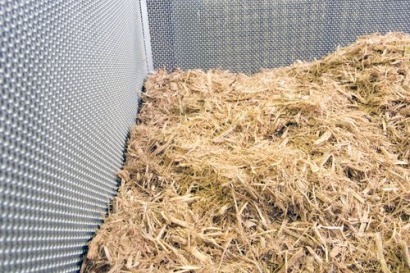
The fact sheet explains that generating electricity and heat from biomass is an increasingly important tool in the fight against climate change. If biomass is sustainably sourced, it should have a beneficial impact on forest management and lead to a substantial saving in greenhouse gas emissions across the supply chain compared to fossil fuels. When wood or plant material is burned, the carbon released into the atmosphere has only been locked away for the lifetime of that tree or plant. If cultivation of biomass is sustainably managed, the same amount of carbon should be reabsorbed, keeping carbon levels in the atmosphere stable. In contrast, burning fossil fuels releases carbon that would otherwise have stayed locked underground. This carbon stays in the atmosphere, contributing to climate change.
The UK biomass industry is at the forefront of developing sustainability criteria which should recognise existing high environmental standards in the biomass supply chain and encourage them elsewhere, the fact sheet points out.
If procurement policies are coupled with strong sustainability criteria, they encourage:
Less conversion of forest land for development by landowners seeking more profitable uses.
Less neglect of forests, which leads to wildfires, disease and infestation – all of which impair carbon absorption and can even lead to increased net emissions.
Greater rates of carbon absorption among the forest stands as trees are given optimal access to the light and nutrients they need to grow.
Continued carbon absorption – mature trees that no longer provide a net carbon sink are harvested to allow younger trees that absorb at a greater rate to flourish.
“Even when we factor in the biomass supply chain, which includes shipping and processing, its carbon footprint is dwarfed by coal” said Paul Thompson, Head of Policy at the REA. “It’s also wrong to claim that biomass leads to ‘carbon debt’. This argument ignores a number of realities about how forests are managed and the types of wood and crops that produce biomass feedstock. With sustainable forestry and the use of a mixture of biomass sources, carbon debt can be avoided altogether. Many forests around the world are actually in carbon credit as a result of better management linked to biomass energy use. In fact, biomass goes hand-in-hand with sustainable forestry practices that have contributed to a global rise in forest cover over the past 20 years. It’s a renewable fuel source that outperforms fossil fuels on a host of measurable benefits.”
The fact sheet goes on to explode a number of misunderstandings about biomass and sustainability. The notion of carbon debt for example measures the harvesting cycle inaccurately and views biomass on a tree-by-tree scale. The sustainable management of the trees in a production forest means they have been absorbing far more carbon than they would have done if the forest had not been managed. In effect, this means such trees are building up a carbon credit as they grow. Not all biomass comes from timber wood. Firstly, most wood biomass feedstock is made up of residues, bark, off-cuts and other wastes, which could never be used for timber. Non-wood sources such as agricultural residues or miscanthus (especially grown for energy use), are specifically planted for this purpose, meaning there is no carbon debt at all.
Secondly, although some people claim that the supply chain carbon footprint of biomass, when wood products are imported from abroad, is not factored into the carbon emissions of biomass and therefore the real footprint is much larger than claimed, in fact, the UK Government requires the whole biomass chain – including harvesting, processing, storing, transporting and replanting – to emit at least 60% less carbon than the EU grid average emissions. Indeed, the industry is absolutely committed to meeting, and in many cases significantly exceeding, that standard the fact sheet claims.
Finally, the notion of ‘indirect substitution’ suggests that using wood for biomass is competing with supplies of wood for furniture, construction and similar purposes. Therefore builders, for example, will use more concrete in place of wood, which leads to high carbon emissions.
However, this wrongly assumes that:
a) All of a tree is burned for biomass energy. In fact biomass frequently only uses parts of the trees that have no other commercial use, such as thinnings, smaller branches and off-cuts, which would otherwise be wasted. In fact, because of the difference in timber prices (wood for furniture or construction is more expensive than the biomass industry could afford), biomass rarely causes indirect substitution.
b) There is a defined capacity of forestland and we can’t increase or improve it. Actually higher demand for well-managed forests means helping forests to become more productive and even bringing currently neglected forests back into use. 60% of the UK’s forest land, for example, is currently unmanaged.
c) Wood is the only source of biomass. Not true - there are non-forest sources of biomass, such as energy crops and agricultural by-products, including miscanthus, switchgrass, hemp, straw, bamboo and sugarcane. In addition, a lot of biomass burned for energy is sourced from by-products and residues or is a material, such as non-recyclable waste wood, that has no other economic value and therefore goes to landfill.
The bioenergy industry stimulates reforestation. Alternative demand for bioenergy, often met by wood that previously had little value, can underpin the investment case for better forest management and new forest plantation. FAO’s Global Forest Resources Assessment 2010 shows forest cover has been steady in Canada and increasing in, for example, in the US, Russia and Europe between 1990 and 2010. Most biomass used in the UK comes from the areas above, but even elsewhere in the world the rates of deforestation are declining.
Further information:

